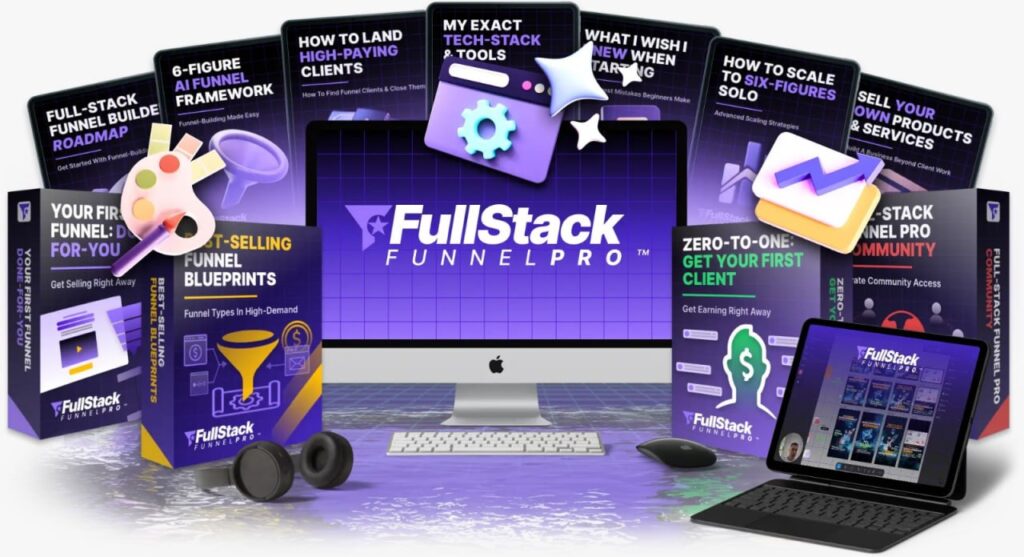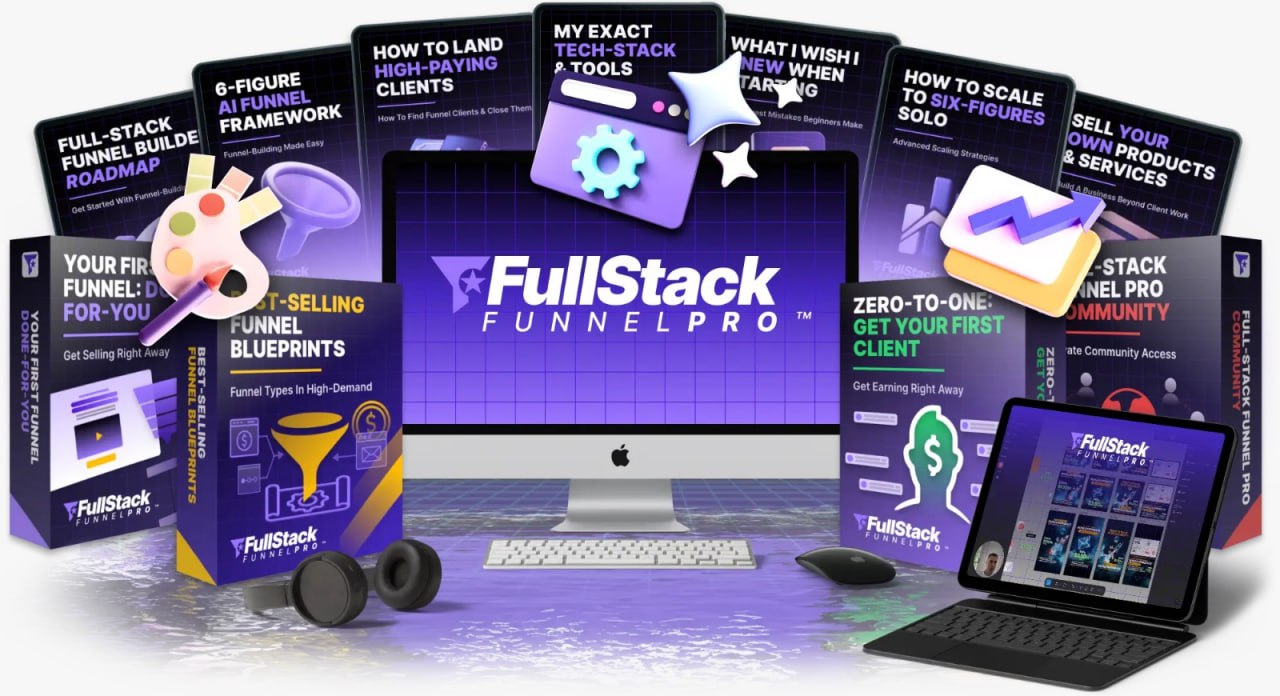In today’s digital age, the opportunity to build a lucrative online business has never been more accessible. With the right strategies, tools, and mindset, you can create a FullStack Funnel PRO system that generates $10,000 or more per month—all from the comfort of your home. This article will guide you through the step-by-step process of building a high-converting sales funnel, driving traffic, and scaling your online business to achieve consistent income.

What is a FullStack Funnel PRO?
A FullStack Funnel PRO is a comprehensive sales funnel system that combines multiple marketing strategies, tools, and techniques to attract, convert, and retain customers. It’s called “FullStack” because it covers every stage of the customer journey, from awareness to purchase and beyond. The goal is to create a seamless experience for your audience while maximizing your revenue potential.
The key components of a FullStack Funnel PRO include:
- Lead Generation: Attracting potential customers to your funnel.
- Conversion Optimization: Turning leads into paying customers.
- Upselling and Cross-Selling: Increasing the average transaction value.
- Retention and Loyalty: Encouraging repeat purchases and building long-term relationships.
Step 1: Choose Your Niche and Product
The foundation of any successful online business is a profitable niche and a high-demand product. Here’s how to get started:
- Research Your Niche: Focus on a niche that aligns with your interests, expertise, and market demand. Use tools like Google Trends, Amazon Best Sellers, and social media to identify trending topics.
- Select Your Product: You can sell physical products, digital products, or services. Consider affiliate marketing, dropshipping, or creating your own product (e.g., an online course, eBook, or software).
- Validate Your Idea: Test your product idea by running a small ad campaign or conducting surveys to gauge interest.
Step 2: Build Your Sales Funnel
A sales funnel is the backbone of your FullStack Funnel PRO system. It guides your audience through a series of steps designed to convert them into customers. Here’s how to create one:
- Landing Page: Create a high-converting landing page that highlights the benefits of your product and includes a clear call-to-action (CTA).
- Lead Magnet: Offer a free resource (e.g., eBook, checklist, or webinar) in exchange for your visitor’s email address.
- Email Sequence: Set up an automated email sequence to nurture your leads and build trust. Provide value, address objections, and pitch your product.
- Sales Page: Design a persuasive sales page that showcases your product’s features, benefits, and testimonials.
- Checkout Page: Make the checkout process simple and secure. Offer multiple payment options to reduce friction.
- Upsell/Cross-Sell: After the initial purchase, present additional offers that complement the main product (e.g., a premium version or related items).
Step 3: Drive Targeted Traffic
No matter how good your funnel is, it won’t generate revenue without traffic. Here are some proven strategies to drive targeted traffic to your funnel:
- Paid Advertising: Use platforms like Facebook Ads, Google Ads, or TikTok Ads to reach your ideal audience. Start with a small budget and scale up as you see results.
- Search Engine Optimization (SEO): Optimize your website and content for search engines to attract organic traffic.
- Social Media Marketing: Leverage platforms like Instagram, LinkedIn, and Pinterest to engage with your audience and promote your funnel.
- Content Marketing: Create valuable content (e.g., blog posts, videos, or podcasts) that addresses your audience’s pain points and drives them to your funnel.
- Email Marketing: Build an email list and send regular newsletters to keep your audience engaged.
Step 4: Optimize for Conversions
To maximize your revenue, you need to continuously optimize your funnel for conversions. Here’s how:
- A/B Testing: Test different headlines, images, CTAs, and pricing to see what works best.
- Analyze Data: Use tools like Google Analytics, Hotjar, or ClickFunnels to track your funnel’s performance and identify areas for improvement.
- Improve Load Speed: Ensure your pages load quickly to reduce bounce rates.
- Simplify the Process: Remove unnecessary steps and make it easy for visitors to complete their purchase.
Step 5: Scale Your Business
Once your funnel is generating consistent revenue, it’s time to scale. Here are some strategies to take your business to the next level:
- Increase Ad Spend: Allocate more budget to your top-performing ad campaigns.
- Expand Your Product Line: Offer new products or services to your existing customer base.
- Automate Processes: Use tools like Zapier, ActiveCampaign, or Kartra to automate repetitive tasks and save time.
- Outsource Tasks: Hire freelancers or virtual assistants to handle tasks like customer support, content creation, and ad management.
- Build a Community: Create a Facebook group, membership site, or online community to foster loyalty and encourage repeat business.
Step 6: Retain and Delight Your Customers
Customer retention is key to long-term success. Happy customers are more likely to make repeat purchases and refer others to your business. Here’s how to keep them engaged:
- Follow-Up Emails: Send thank-you emails, request feedback, and offer exclusive discounts.
- Loyalty Programs: Reward repeat customers with points, discounts, or freebies.
- Exceptional Support: Provide fast and helpful customer service to resolve issues and build trust.
- Engage on Social Media: Interact with your customers on social media and show appreciation for their support.
Tools to Build Your FullStack Funnel PRO
To streamline the process, here are some essential tools you’ll need:
- Funnel Builder: ClickFunnels, Kartra, or Leadpages.
- Email Marketing: ActiveCampaign, ConvertKit, or Mailchimp.
- Payment Processing: Stripe, PayPal, or Square.
- Analytics: Google Analytics, Hotjar, or Mixpanel.
- Automation: Zapier, Integromat, or Automate.io.
